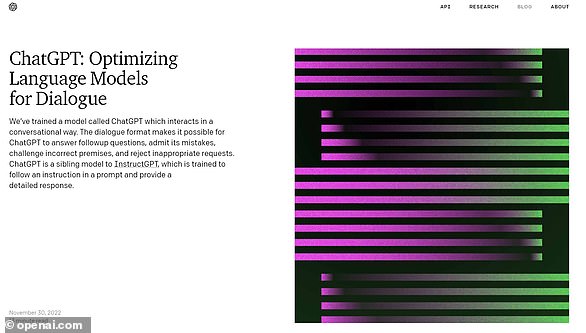The 20 jobs most at risk as the AI boom continues: Is YOUR occupation on the list?
>
The rise of artificial intelligence will boost economic growth, but it’s also about to take over the job market — and a new study reveals the 20 most threatened professions.
A team of researchers led by Princeton University conducted an AI methodology for occupational exposure by linking 10 AI-powered applications, such as language modeling, to 52 human abilities to understand if there is a close connection.
The results showed that telemarketers, teachers, school psychologists and judges are among the highest risk groups.
The fear that software would eliminate human jobs has recently made waves worldwide following the launch of ChatGPT and its ability to perform eerily human professional tasks such as writing emails and resumes.
Teachers made the list of 20 jobs at risk of being taken over by artificial intelligence
The effect of AI on work is likely to be multifaceted. In some cases, AI can replace work previously done by humans, and in other cases, AI can complement the work done by humans,” the study published Monday reads.
A prominent example of how AI capabilities continue to evolve is the recent advancements in AI language modeling.
“In particular, ChatGPT, a language modeler released by Open AI in late 2022, has received tremendous attention and controversy.”
The team used the AI measurement of occupational exposure, created by Edward Felten, also with Princeton University, in 2021.
The 10 AI applications include: abstract strategy games, real-time video games, image recognition, visual question answering, image generation, reading comprehension, language modeling, translation, speech recognition, and instrumental trace recognition.
And the 52 human abilities include examples such as oral comprehension, oral expression, inductive reasoning, and arm-hand-holding.
The team obtained human capabilities from the Occupational Information Network (O*NET) database developed by the US Department of Labor, which uses this database to describe more than 800 occupations.
Researchers then added language modeling to the measurement, showing how evolved chatbots like ChatGPT are changing which professions are now at risk.

The team compared previous professions at risk for AI with a new list that includes the software’s application of language modeling. This application showed a dramatic shift to education jobs, while the original list shows more in finance
The language modeling list shows several related to education. The team’s notes in the study indicate that “educational professions are likely to be relatively more affected by advances in language modeling than other professions.”
These findings seem consistent with using ChatGPT to create homework assignments.
ChatGPT, trained on a gigantic amount of text from the Internet, can understand human language, hold conversations with people and generate detailed text that many say is human-like and quite impressive.
Kevin Bryan, an associate professor at the University of Toronto who led an AI-based entrepreneurship program, said he was “shocked” by ChatGPT’s capabilities after testing it by having the AI write multiple exam answers.
“You are no longer allowed to give take-home exams/homework,” he said in December 2022.
When assigning different AI tasks, some of which involve combining knowledge in different fields, Bryan said it “frankly outperformed an average MBA.”
Telemarketers were ranked the most risky, which may come as no surprise given that many companies are currently using AI-powered chatbots for this role.
Lyft, Fandango, Spotify, and Mastercard are just a few of the large group that push users to ask questions to a chatbot to better target their questions.

The fear that software will eliminate human jobs has recently made waves around the world following the launch of ChatGPT
AI is not yet able to replace human judges, but the technology is useful in many ways in the courtroom.
An AI machine can collect research, preventing the judge from going through legal books manually.
Earlier this month, a judge in Colombia revealed that he used ChatGPT to help him decide a case involving an autistic child.
Judge Juan Manuel Padilla Garcia, presiding over a tribunal in the Caribbean city of Cartagena, announced he had used the system in his Jan. 30 ruling.
He was asked to decide whether a health insurance company could refuse to pay for medical appointments, therapy and transportation for an autistic boy named Salvador, given his parents’ limited income.
Padilla – who ruled in favor of the boy and against the health insurance company – said he asked the bot, “Are autistic minors exempt from paying fees for their therapies?” among other questions.
It replied, ‘Yes, that’s right. Under the rules in Colombia, minors diagnosed with autism are exempt from paying fees for their therapies.”
It was long thought that robots would take over blue collar jobs, but AI is chasing white collar positions.
AI has the potential to improve jobs where people make a living writing reports, from six-figure payroll consultants hired by public services and large corporations to suburban GPs and home tutors teaching children.
Fundamental journalism is also under threat, with AI able to compile sports reports and condense stock market movements into a readable summary.

